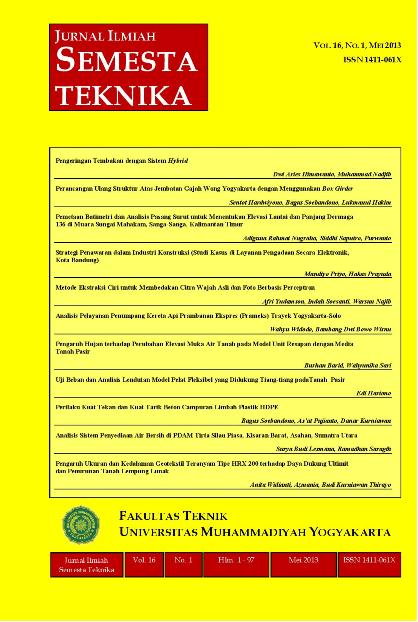Strategi Penawaran dalam Industri Konstruksi (Studi Kasus di Layanan Pengadaan Secara Elektronik, Kota Bandung)
DOI:
https://doi.org/10.18196/st.v16i1.430Abstract
The aims of this research are to calculate the value of mark-up using bidding strategy approach and to determine the best bidding strategy to win a tender with the optimum mark-up value and the optimum profit. The data being used in this research are auction data that have been completed in 2010-2012 at LPSE Bandung using statistical approach namely discrete multi distribution, normal multi distribution, and single normal distribution. Bidding strategy methods being used are Friedman Method, Gates Method, and Ackoff & Sasieni Method. The Friedman Method can generate an optimum mark-up of 10% with expected profit of -0.0014, an optimum mark-up of -9% with expected profit of -0.0003, and an optimum mark-up of -1% with expected profit -0.0004 for discrete multi-distribution, multi-normal distribution, and single normal distribution, respectively. The Gates Methods can produce an optimum mark up of 6% with expected profit of 1,5000, an optimum mark up of 5% with expected profit 0.0097, and an optimum mark up of 6% with expected profit 1.2888 for discrete multi distribution, multi-normal distribution, and single normal distribution, respectively. While the Ackoff & Sasieni Methods can generates an optimum mark-up of -2% with expected profit -0.0003, an optimum mark-up of 1% with expected profit for 0,0013 for discrete multi distribution, and for both multi and single normal distributions, respectively.
Downloads
Published
How to Cite
Issue
Section
License
Semesta Teknika is licensed under a Creative Commons Attribution 4.0 International License.
Authors who publish with this journal agree to the following terms:
- Authors retain copyright and grant the journal right of first publication with the work simultaneously licensed under a Creative Commons Attribution License that allows others to share the work with an acknowledgement of the work's authorship and initial publication in this journal.
- Authors are able to enter into separate, additional contractual arrangements for the non-exclusive distribution of the journal's published version of the work (e.g., post it to an institutional repository or publish it in a book), with an acknowledgement of its initial publication in this journal.
- Authors are permitted and encouraged to post their work online (e.g., in institutional repositories or on their website) prior to and during the submission process, as it can lead to productive exchanges, as well as earlier and greater citation of published work (See The Effect of Open Access).









